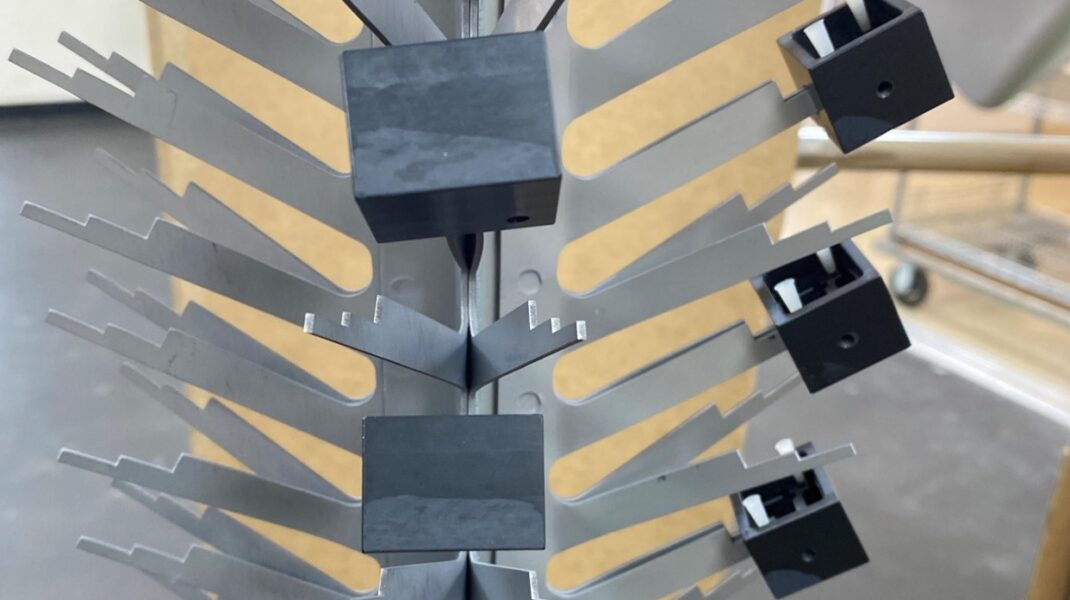
The Impact of Grain Boundaries on Metal Finishing Services
As experienced metal finishers, we are aware of the implications that grain boundaries can have on our metal finishing processes and, ultimately, our customers’ products.
Our customers send us fabricated and machined parts that appear to be made with defect-free material and are ready for metal finishing processes. From there, our team expertly completes the steps necessary to anodize the customer’s parts according to the specifications. This is the step where grain boundaries may become visible to the naked eye, resulting in some confusion and frustration.
Before we dive deeper into how grain boundaries affect metal finishing, we’ll provide a definition. Grain boundaries represent regions where the lattice structures of adjacent grains do not perfectly align, resulting in distinct interfaces between them. In simpler terms, they are boundaries between the various sections of metal that make up the final material. These boundaries are the result of how the alloy was made, either by forging, casting, and so on. These areas of the metal are virtually invisible during the fabrication and machining process.
However, grain boundaries become especially significant during metal finishing processes, where surface appearance is critical. These boundaries often manifest as visible lines or patterns, resembling blotches or streaks on the surface of finished components. While in more minor cases they represent mere cosmetic issues, these visible markings can significantly affect the overall aesthetics and quality of the final product.
Allow us to explain the impact of grain boundaries on metal finishing processes and offer recommendations for enhancing the appearance of end products.
How Grain Boundaries Form in Anodized Aluminum
Several factors contribute to the presence of grain boundaries and their visibility in finished parts. Here are some examples:
1. During Extrusion Processes
When aluminum is alloyed with other metals to enhance its strength and durability, these alloying elements are distributed – not fully mixed – throughout the material. As the molten metal cools, each alloying element solidifies at a different temperature, forming distinct grain boundaries.
Imagine a batch of molten metal gradually cooling down – while the aluminum remains in a liquid state, the other alloying metals modify around it to create a supportive reinforcement structure. However, during subsequent processes like anodizing, where only aluminum can undergo the desired chemical reactions, the other alloying elements may leave behind visible white spots or defects on the surface of the finished product.
2. During Cooling Processes
The rate at which metal cools plays a role in determining the structure and visibility of grain boundaries. Rapid cooling rates often result in smaller grain sizes and finer grain boundaries, while slower cooling rates may produce larger grains with more prominent boundaries.
3. During Metal Finishing Processes
The Global Metal Finishing team always recommends that customers thoroughly clean cutting fluids from the surfaces of their parts before sending them to us. Cutting fluid residue can impact metal finishing processes, as the stripping procedures we use to remove these fluids make grain boundaries visible.
Often, grain boundaries may not be apparent until after anodizing. This chemical process etches into the aluminum, accentuating underlying patterns that affect the metal’s appearance.
Our Recommendations for Manufacturers
While our customers don’t have much control over grain boundary issues, there are some proactive steps they can take to mitigate them.
- Facilitate aggressive surface finishing procedures. Forceful surface finishing treatment, such as tumbling or bead blasting, can help cover up grain boundaries.
- Hold your vendors to the high standards you deserve. Sourcing materials from reliable vendors who employ consistent cooling practices can reduce the likelihood of grain boundary defects. If we alert you of any grain boundaries that become noticeable during processing, we encourage you to connect with your material vendor to ask them what may be causing these issues. The cause could involve one-off issues during extrusion, but if it’s the result of improper cooling methods, that might be something you should be aware of.
Navigate Grain Boundary Challenges with a Trusted Metal Finishing Partner
While grain boundaries might not be a top concern for manufacturers, their impact on the quality and appearance of finished parts should not be underestimated. By understanding the factors contributing to grain boundary issues and implementing appropriate surface finishing techniques, you can work together with the Global Metal Finishing team to achieve optimal results.
Partner with our expert team for exceptional metal finishing services every time.
